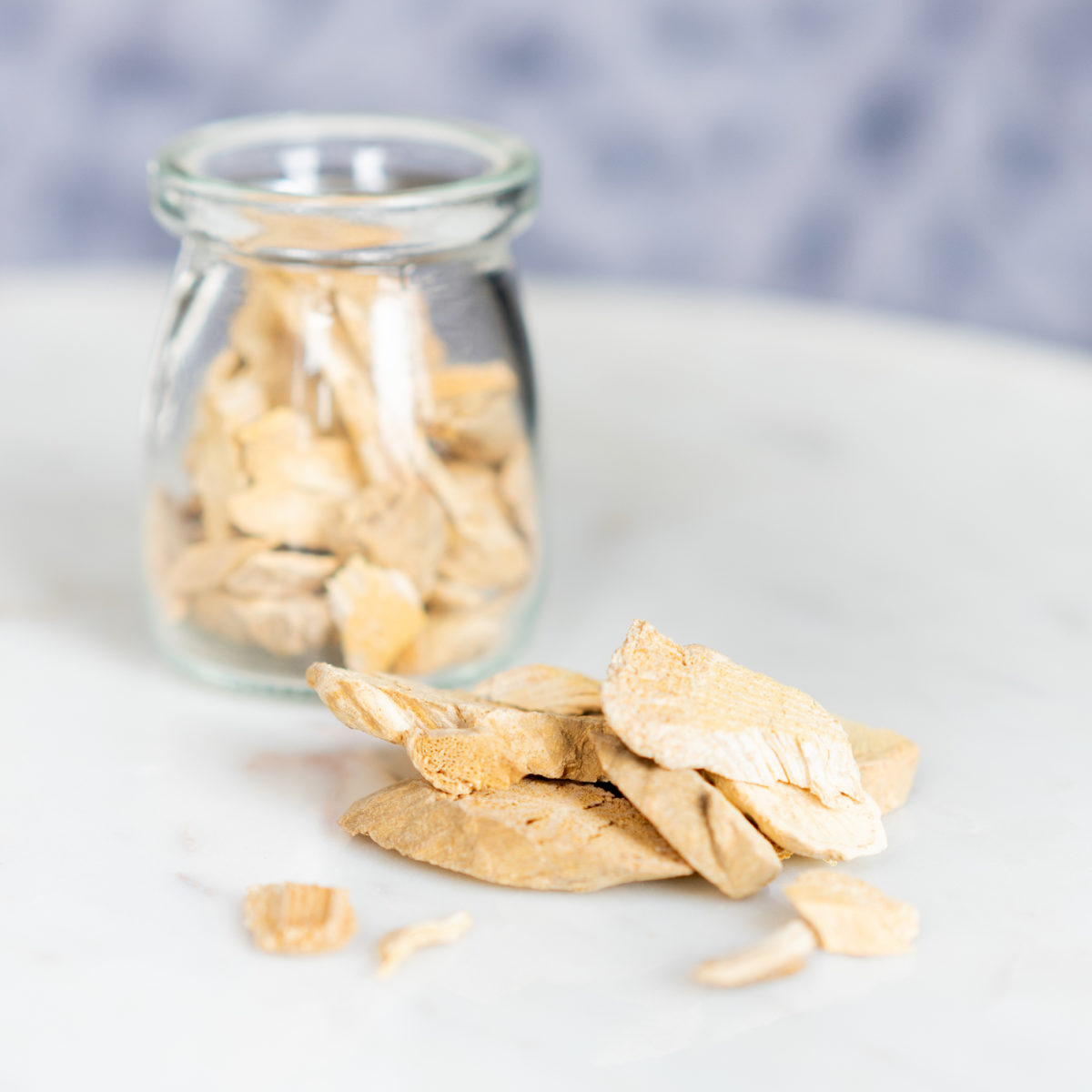
COMMON NAME (Chinese Name)
Stephania Root (Hang Fáng Jǐ)
BOTANICAL NAME
Stephania Tetrandra
USES
The most common traditional indications for its use include edema, eczema, rheumatoid arthritis, and high blood pressure. More research is needed to verify these effects, though it’s believed that these may be the result of a potent diuretic effect.
Novel (topical) uses for stephania root extracts include reversing the drug-resistance of some strains of bacteria, including (and potentially) drug-resistant staph infections (ARSA and MRSA). What’s more, a specific stephania root derivative (tetrandrine) may help augment the effectiveness of the topical antifungal medication ketoconazole in treating common hair-follicle, skin, and nail-bed infections. This same compound may similarly help augment traditional Western medicinal treatments of yeast infections. It should be noted that much more research is needed to determine the mechanism of these effects. That said, this result suggests that applying dilute stephania root extract topically before ketoconazole cream may speed recovery from these kinds of infections.
Internally stephania is used in TCM to fight edema, It’s categorized as an herb that drains dampness. It is bitter, pungent and cold and primarily affects the Spleen, Bladder and Kidney meridians.
PREPARATION & ADMINISTRATION
It’s important to not confuse this with Aristolochia fangchi (“guang fàng jǐ”) as this is a different medicinal plant species. Also often called “fang ji”, it has been mistakenly or unknowingly substituted for or mixed with stephania root. Aristolochia fangchi contains known carcinogens and is nephrotoxic (which can induce kidney failure).
True stephania root powder is most commonly available as a root powder or root extract. Some specialty stores also carry the whole, dried, peeled roots for at-home hot-water decoction.
PRECAUTIONS
Because it may affect blood pressure, you should not take stephania root supplements if you have high blood pressure or other cardiovascular conditions, or if you are taking high blood pressure medications. Like most diuretics, common side-effects of popular oral administration of stephania root supplements may cause increased urine output, diarrhea, and symptoms of dehydration like dizziness, nausea, vomiting, headache, and more.
You should consult with a certified herbalist, physician or other qualified healthcare professional before taking stephania root.
REFERENCES
Khan, Mohd Sajjad Ahmad, et al. New Look to Phytomedicine: Advancements in Herbal Products as Novel Drug Leads. Academic Press, 2019.
Shi, Jian-Ping, et al. “Synergistic Effects of Tetrandrine on the Antifungal Activity of Topical Ketoconazole Cream in the Treatment of Dermatophytoses: A Clinical Trial.” Chinese Journal of Integrative Medicine, vol. 17, no. 7, 2011, pp. 499–504., doi:10.1007/s11655-010-0782-3.
Tankeu, Sidonie, et al. “Differentiation between Two ‘Fang Ji’ Herbal Medicines, Stephania Tetrandra and the Nephrotoxic Aristolochia Fangchi, Using Hyperspectral Imaging.” Phytochemistry, vol. 122, 2016, pp. 213–222., doi:10.1016/j.phytochem.2015.11.008.
Teethaisong, Yothin, et al. “Synergistic Activity and Mechanism of Action of Stephania Suberosa Forman Extract and Ampicillin Combination against Ampicillin-Resistant Staphylococcus Aureus.” Journal of Biomedical Science, vol. 21, no. 1, Nov. 2014, doi:10.1186/s12929-014-0090-2.
Upton, Roy. American Herbal Pharmacopoeia: Botanical Pharmacognosy – Microscopic Characterization of Botanical Medicines. American Herbal Pharmacopoeia/CRC Press, 2011.
Wagner, Hildebert, et al. “Radix Stephaniae Tetrandrae Hanfangji.” Chromatographic Fingerprint Analysis of Herbal Medicines, 2011, pp. 311–324., doi:10.1007/978-3-7091-0763-8_29.
ZHANG, et al. “Characterization of Diuretic Effect and Nephrotoxicity of the Aristolochia Fangchi Total Extract in Comparison with Stephania Tetrandra.” Anhui Medical and Pharmaceutical Journal, 2009.
